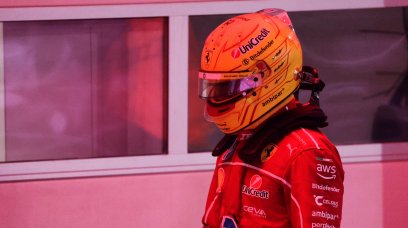A Technical Directive to all teams will become effective from this weekend's French Grand Prix, with safety on the mind of the FIA after the tyre failures experienced by two teams in Azerbaijan. Pirelli released their findings on Tuesday into the failures of Aston Martin's Lance Stroll and Red Bull's Max Verstappen in Baku, with the issues stemming from the way the tyres were being operated being the possible cause of the failures. Following this, teams will now face more stringent conditions under which they must operate their tyres in relation to pressures and temperatures, in a bid to ensure there will be no further failures. The revised directive, TD003, issue C, is understood to be more than 12 pages long with far more detailed operating conditions outlined. Certain practices, which could theoretically be used by the teams, have been forbidden as well as having new checks defined as part of the operating procedures. These changes are being made to ensure conformity to Pirelli's requirements for tyre operation. With Aston Martin and Red Bull both issuing statements confirming they have obeyed all operating condition requirements up until now, this Technical Directive appears to be with the purpose of closing down any possible loopholes that could be exploited by a team following the loophole identification as a result of the investigation. As pressures are not monitored in real time, teams have been told that the responsibility currently lies with them to ensure they remain within the limits defined by Pirelli. To help achieve this, RacingNews365 understands that existing checks will be stepped up to ensure teams can't cool down their tyres after their minimum starting pressures, as defined by Pirelli, have been checked. Delaying the car from leaving the pits after the tyre blankets have been removed is one area that can now see a team reported to the stewards, as this will be considered a means of cooling the tyres. Teams will be given thirty seconds leeway to get the car onto the track from when the tyre blankets are removed. Tyre under-inflation will result in teams being told to increase their pressures and could be reported to the stewards. Any car which does not pass the pre-race checks after the three-minute signal is given before the race will be forced to start from the pitlane. Tyre temperatures appear to be a critical area that the Technical Directive is targeting, with cold pressure checks being carried out on tyres used in qualifying. The tyre set each driver uses for their fastest time, as well as race tyres, will be checked against a 'cold cooling curve' specified by Pirelli to check the pressures against what they should be at a specific temperature. The FIA will supply seals to the teams for the purposes of these checks between now and July 12. After that date, teams must supply their own. Tyre must not be off where it should be on this cooling curve. After July 12, the leniency is believed to be just 0.1 psi. Tyre temperatures will also be measured in the garages during qualifying and the race, immediately prior to a run on track. Any tyres found to be too hot must have their settings adjusted in the blanket before fitting, or be replaced, which could have very obvious consequences if this happened during a race. To prevent any heat cycling issues, teams will also be reported to the stewards if they heat tyres during a session but then don't run them on the cars. All checks will be carried out using gauges supplied and calibrated by Pirelli, and sealed by the FIA, with temperatures being checked through an infra-red gun. If any discrepancies are found in any of these new areas, the issue will go before the stewards.
Most read









